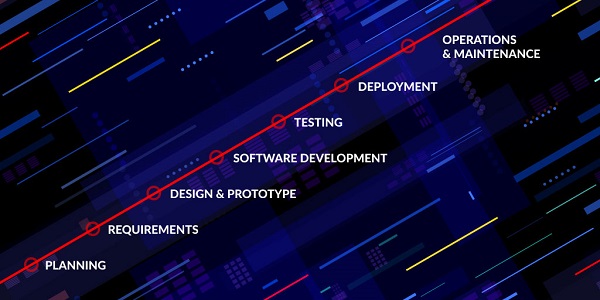Software Engineering DefinitionIntroductionThe technical field known as software engineering addresses all aspects of software creation. It is described as the analysis and identification of a problem or underlying issue, followed by the design, development, and testing of a piece of software or an application that would ultimately aid in resolving that specific problem. Regarding software design, automation of resources is the biggest benefit because the software has substantially lowered the amount of human labour required to do simple calculations and operations. The software industry has seen significant growth in recent years, so software engineering has become an essential discipline. Software engineering is designing, developing, testing, and maintaining software applications using a systematic and disciplined approach. This article explores the various subtopics related to software engineering, including its history, principles, methodologies, tools, benefits and challenges. History of Software EngineeringThe history of software engineering dates back to the 1940s when the first electronic computers were developed. During this period, software development was an informal process with programmers writing code only when it was absolutely necessary. However, with the growth of computer usage in the 1950s and 1960s, the need for a more formal software development process became apparent. In 1968, NATO organized a conference to discuss software development challenges, and the term "software engineering" was coined. Several methodologies have been developed to support the software development process. Principles of Software EngineeringSoftware engineering principles are the fundamental concepts that guide the development of robust and efficient software applications. The following are the primary principles of software engineering: 
1. Modularity Modularity is the principle of dividing software into small, independent modules that can be easily tested and maintained. This principle makes developing, testing and maintaining software applications easier. 2. Abstraction Abstraction is the process of simplifying complex software systems by hiding unnecessary details. This principle ensures that software applications are easier to understand and modify. 3. Encapsulation Encapsulation hides the internal details of software modules, making modifying and maintaining the software easier. 4. Separation of Concerns It is the principle of separating the different concerns of a software system into distinct modules. This principle ensures that each module has a well-defined responsibility and can be easily maintained. 5. Loose Coupling Loose coupling is the principle of minimizing the dependencies between software modules. This principle ensures that changes to one module do not affect the functionality of other modules. Methodologies of Software EngineeringSoftware development methodologies are a set of processes, principles, and practices that guide the software development process. The following are the primary software development methodologies: 1. Waterfall The waterfall model is a linear software development methodology where the different phases of software development, such as requirements gathering, design, development, testing, and deployment, are carried out sequentially. This methodology is best suited for projects with well-defined requirements and where changes are minimal. 2. Agile Agile software development is an iterative and incremental methodology that delivers working software in short iterations. This methodology is best suited for projects with evolving requirements and where flexibility is crucial. 3. Scrum Scrum is an agile software development methodology emphasizing teamwork, collaboration, and frequent communication. In Scrum, the development process is divided into small iterations called sprints, and each sprint delivers a working software increment. 4. DevOps DevOps is a software development methodology focusing on integrating development and operations. The primary goal of DevOps is to deliver software quickly and reliably by automating the software development process. Tools of Software EngineeringSoftware engineering tools are applications and programs that support the software development process. The following are the primary software engineering tools: 1. Integrated Development Environments (IDEs) IDEs are software applications that provide a comprehensive environment for software development. IDEs typically include a code editor, a debugger, and other tools that make software development more efficient. 2. Version Control Systems (VCS) VCS are software tools that enable developers to track changes made to software source code over time. VCS tools are essential for collaborative software development, enabling multiple developers to work on the same codebase simultaneously. 3. Testing Tools Testing tools are software applications that support the testing process. These tools include unit testing frameworks, integration testing frameworks, and performance testing tools. 4. Project Management Tools Project management tools are software applications that support the management of software development projects. These tools typically include features for task tracking, team collaboration, and project planning. 5. Continuous Integration and Deployment (CI/CD) Tools CI/CD tools are software applications that automate software development, including build, testing, and deployment. These tools help to ensure that software is delivered quickly and reliably. Basic Software Engineering Terminologies1. Deliverables and MilestonesVarious deliverables are created while the software is being developed. Examples include user guides, operational instructions, and source code. Milestones are an important component of project planning and management. This feature monitors the project's progress and is considered an essential tool for software development. The completion of the software of this specification is a significant accomplishment. The completion of the design documentation is another success. 2. Process and ProductsA product is anything that the client receives. It might include instruction manuals, supporting materials, specifications, source code, etc. It is essentially just a list of deliverables. The procedure we use to generate software. It is a collection of processes that yields (part of) a product. A productive process is required to produce goods of high quality. The outcome will undoubtedly suffer if the approach is ineffective, but process overreliance can also be dangerous. 3. Measures, Metrics, and MeasurementA measure offers a numerical representation of the breadth, depth, size, capacity, effectiveness, productivity, or dependability of certain characteristics of a good or process. Evaluation of a measure is the act of measurement. A metric is a numerical assessment of how much a system, component, or process contains a particular quality. 4. Software Process and Product MetricsProcess metrics measure the features of the environment and the software development process, whereas product metrics measure the properties of the software result. Examples of process metrics include output, caliber-, effectiveness, the product's size, dependability, complexity, and other metrics. 5. Generic and Customized Software ProductsProducts with generic names are made for consumers who are not identified. In general, it is meant for the entire world, and many copies are hoped to be sold. Software for humongous infrastructure, such as operating systems, compilers, analysers, word processors, CASE tools, etc., falls under this area. Customized things are made for certain clientele. The specific product is designed and developed in response to user demands. Most development initiatives-roughly 80%-fall into this category. Software Life Cycle ModelsThe time frame that begins when a software product is imagined and ends when it can no longer be used is defined as the complete life cycle of any software.

Benefits of Software Engineering1. Demanding There is a huge demand for software engineers in the market. Software developers will have a huge demand and job listings in a world that is becoming increasingly digitalized and online. 2. Potential for Growth There is no capstone certification in software engineering, but there are loads of options for accumulation. Technology is constantly evolving, so there is constantly something new to learn. 3. High Salary Nearly everywhere, engineers are paid well. Software engineers, in particular, can testify to this. Software developers earn more because they are consistently learning new things. 4. Access to Programs of Higher Quality As a software engineer, you get to work with the latest recent frameworks and technologies. You've studied a lot of programs like it, so you have a firm handle on syntax and logic building. 5. Relative Timetables Software engineers have a wide choice of scheduling options because they can work from home with freedom. Many jobs will allow you to work remotely, but some may require physical presence. 6. Better Job Opportunities The need for software engineers is growing; thus, this field has many job opportunities! If you're seeking a job, there are many organizations to choose from and places to look. Challenges in Software EngineeringSoftware engineering is a complex and challenging field. The following are some of the significant challenges in software engineering: 1. Software Complexity Modern software applications are incredibly complex, with millions of lines of code and numerous dependencies. This complexity makes developing, testing and maintaining software applications challenging. 2. Changing Requirements Software development projects often face changing requirements, which can be difficult to manage. Changing requirements can lead to scope creep, delaying the project and increasing its cost. 3. Technical Debt Technical debt is the cost of maintaining poorly written or outdated code. Technical debt can make it difficult to modify software applications, leading to longer development cycles and higher costs. 4. Security Cybersecurity threats are a significant concern for software developers. Hackers can exploit vulnerabilities in software applications to gain unauthorized access to systems and steal data.
Next TopicSoil pollution definition
|
 For Videos Join Our Youtube Channel: Join Now
For Videos Join Our Youtube Channel: Join Now
Feedback
- Send your Feedback to [email protected]
Help Others, Please Share









